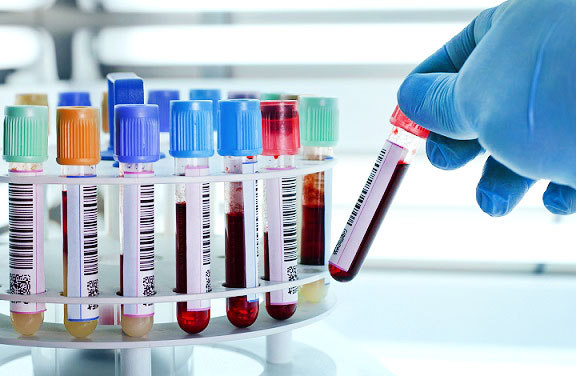
Dual Marker (Double marker)
The double marker test, also known as maternal serum screening, is part of a comprehensive screening called the first trimester screening. It’s not a definitive test. Instead, it’s classified as a predictive test, which means its results report the likelihood of chromosomal abnormalities.
Specifically, this test screens for blood levels of both free beta-human chorionic gonadotrophin (beta-hCG) and pregnancy-associated plasma protein A (PAPP-A).
In a typical pregnancy, there will be either 22 pairs of XX chromosomes in female fetus or 22 pairs of XY chromosomes in male fetus.
A trisomy is a chromosomal condition in which there are extra chromosomes, such as the following:
- Down syndrome: This common trisomy , also referred to as trisomy 21 because there’s an extra copy of chromosome 21.
- Trisomy 18 and trisomy 13: These common chromosomal abnormalities involve an extra copy of chromosome 18 (Edward’s syndrome) or chromosome 13 (Patau’s syndrome).
Levels of hCG and PAPP-A may be either higher or lower than “normal” in pregnancies with these chromosomal abnormalities.
However, blood levels alone don’t produce your results. Instead, the blood test is used along with an ultrasound called a nuchal translucency (NT) scan and a graph is prepared to predict the risk of having an abnormal fetus.
It’s important to remember that the result only tells you whether there’s an increased risk of trisomies. It doesn’t definitively determine whether your baby has any abnormalities.
Timing of the double marker test
Should be performed between 11 to 13 weeks of pregnancy.
Standard results for the double marker test
You’ll receive a low-, moderate-, or high-risk result.
Low-risk (“screen-negative”) is considered a “normal” result and means that there’s a low probability of your baby having chromosomal abnormalities.
If your result is in the normal range, you’ll only be recommended for further testing if there’s some other indicator (like family history, age, etc.) or if you desire to learn more for some other reason.
Still, a low-risk result doesn’t always mean your baby won’t have an issue. And it’s important to note that the first trimester screening only looks at markers for Down syndrome, trisomy 13, and trisomy 18 — not other conditions.
Abnormal results for the double marker test
If your screening comes back as moderate- or high-risk (“screen-positive”) for abnormalities than result can be confirmed with more definitive test such as noninvasive prenatal testing (NIPT) and sometimes invasive tests, like amniocentesis, or chorionic villous sampling.
QUADRAPLE MARKER
The quad screen also known as the quadruple marker test, is a prenatal test that measures blood levels of:
- Alpha-fetoprotein (AFP), a protein made by the developing baby
- Human chorionic gonadotropin (HCG), a hormone made by the placenta
- Estriol, a hormone made by the placenta and the baby's liver
- Inhibin A, another hormone made by the placenta
Ideally, the quad screen is done between weeks 15 and 18 of pregnancy during the second trimester.
The quad screen is used to evaluate whether your pregnancy has an increased chance of being affected with certain conditions, such as Down syndrome or neural tube defects. If your risk is low, the quad screen can offer reassurance that there is a decreased chance for Down syndrome, trisomy 18, neural tube defects and abdominal wall defects.
Factors that can affect the substances measured by a quad screen include:
- A miscalculation of how long you've been pregnant
- Maternal race
- Maternal weight
- Carrying more than one baby during a pregnancy
- Diabetes
- In vitro fertilization
- Smoking during pregnancy
When you consider your test results, remember that the quad screen only indicates your overall chance of carrying a baby who has certain chromosomal conditions, neural tube defects or abdominal wall defects. A decreased chance (negative screen result) doesn't guarantee that your baby won't have one of these conditions. Likewise, an increased chance (positive screen result) doesn't guarantee that your baby will be born with one of these conditions.
Often, positive screen results might cause you to consider other testing, such as:
- Prenatal cell-free DNA screening: This sophisticated blood test examines cell-free DNA from the placenta and the fetus in the mother's bloodstream.
- Targeted ultrasound: If you are at high risk of a neural tube defect, your health care provider might suggest this test. Ultrasound isn't an effective screening tool for Down syndrome.
- Chorionic villus sampling (CVS)
- Amniocentesis
